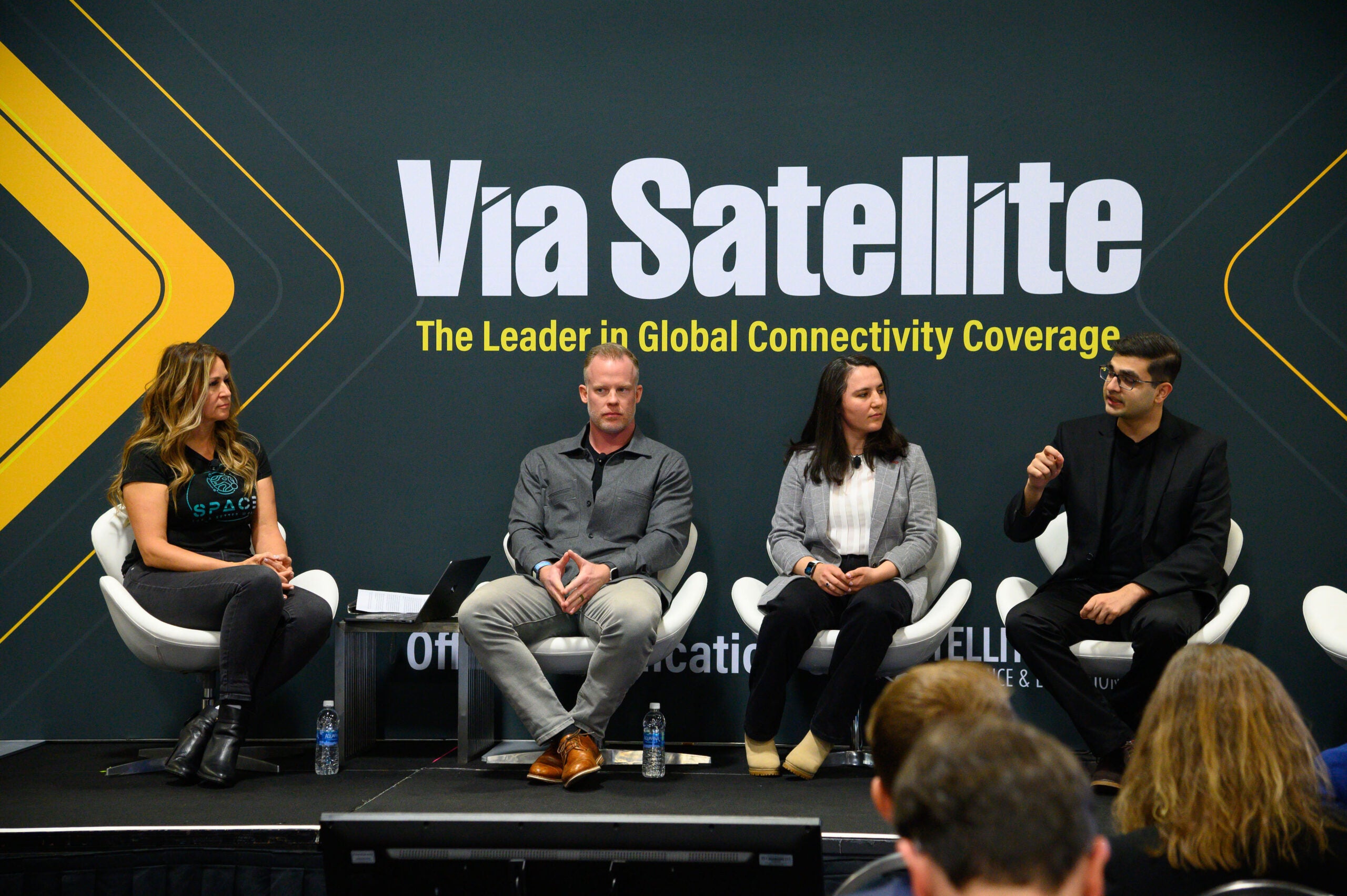Latest News
Exploring New Opportunities to Leverage Earth Observation Data for Sustainability

Luke Fischer, SkyFi CEO, second from left. Mariana Curdoglo of Planet Labs, third from left, and Pixxel CEO Awais Ahmed, right. Photo: Access Intelligence
Earth observation satellites are critical assets for deriving insights into everything from deforestation to natural disasters – and the need for the insights they deliver has never been greater. There is a flurry of promising use cases from satellite companies — such as Planet Labs, Pixxel, and SkyFi — that bring hope as climate change sweeps the globe.
In a March 19 panel at SATELLITE 2024, leaders from these three organizations offered a glimpse of their EO technology and use cases, and weighed in on the future of the EO data market.
Luke Fischer, CEO of SkyFi, which focuses on making Earth observation data accessible, said he’s excited about the enthusiasm around Earth observation and sustainability.
“We now have users in every country,” Fischer said. “So the thesis is proving true [that] if we make it easy [and] make it accessible, the innovators in the world will grab hold of the data, create new analytics and make the world a better place. Sustainability is definitely one of those goals we have. Really excited to see what the trajectory is from the environment here and what is being created every day.”
Mariana Curdoglo, senior product manager of PlanetScope at Planet Labs, pointed to agriculture as one market where EO data is leading to action. One of her favorite examples is a partnership with Organic Valley to improve the efficiency of rotational cattle grazing.
“Organic Valley has small organic farms [and] 175,000 acres of cattle pastureland,” said Curdoglo. “The way they graze is using what’s called good rotational grazing where they have multiple pastures [and] move cows from one to another. If the vegetation is too low, then the cattle can destroy it. If it’s too high or too grown out, then the cattle won’t eat it or won’t be able to digest this. There’s a sweet spot where they’re able to use PlanetScope imagery to understand when they need to rotate their cattle. Something that started with 20 farmers has now grown to 100 farmers.”
The partnership started with 20 farmers and has now grown to 100 farmers. As a result, Organic Valley estimates their farmers using Planet’s satellite datasets are able to capture around a 20 percent increase in pasture utilization, Curdoglo added.
“They’re saving a lot in cost and people and time in going to check the field because they just use the imagery to determine if the field ready to be eaten by the cattle,” she said.
But while EO data use cases have grown, some audiences, including farmers, can be initially resistant to using satellite data and analytics. Experts discussed how to get skeptics to understand the value of EO data.
Awais Ahmed, CEO and co-founder of India-based hyperspectral imagery startup Pixxel, suggested the marketing approach for EO data depends on the market, as well as geographic factors.
“In most cases, when we say farmers are our customers, they are, but they are not directly our customer,” said Ahmed, comparing the United States to India. “For example, we might work with a farmers cooperative. We’d work [with] one set of Google people who are responsible for the partners in that collective and they [have] the responsibility to use the system that they have built over the years.”
But in India, “We go directly to the farmers. These are all small farmers with not enough money to spend on high-end technologies,” Ahmed said, adding that governments often help farmers and other end users commoditize the network.
Panelists also offered predictions for the future success of EO, as well as where investments will come from. Awais said that interest in satellite data is still predominantly from U.S. and global governments, only 20 percent or less is commercial in nature. He expressed some skepticism about environmental, social, and governance (ESG) reporting.
“If you see the spend on ESG data, whether that’s companies like BlackRock, anyone that has investments, [they] want to know who is emitting what. Are they actually doing what they’re saying or is it all just lip service?” Awais asked.
Fischer said investors and customers care about the simplest way to get the best performance.
“The spoiler is no one cares about the imagery,” he said. “No one cares about resolution, pixel size, what your orbit is — nobody cares. They want the solutions. That’s where companies like BlackRock are really focused.”
Get the latest Via Satellite news!
Subscribe Now